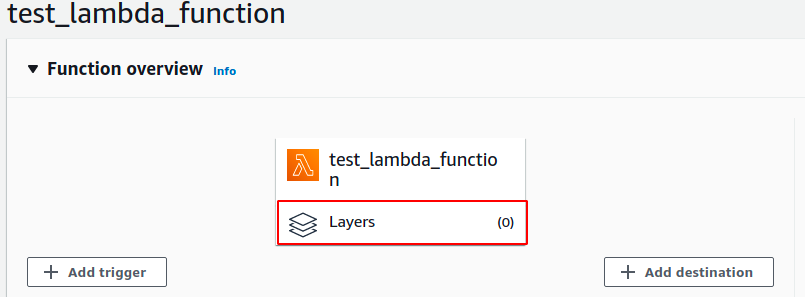How to use requests module in AWS Lambda
Python requests library is by default not avaialble in AWS Lambda Python environments. For using
requests library in Lambda function a Lambda Layer needs to attached to the Lambda
function. This tutorials lists the required steps for creating and attaching Lambda Layer for
requests module.
Step 1: Create Python Virtual Environment
python3 -m venv test_venv
Step 2: Activate Virtual Environment
# [On Ubuntu]
source test_venv/bin/activate
# [On Windows]
.\test_venv\Scripts\activate
Step 3: Check Python Version
python --version
Step 4: Create directory with name python
mkdir python
Step 5: Install requests package in python directory created in Step 4
pip install requests -t python
Step 6: Zip python directory
# [On Ubuntu]
zip -r requests.zip python
# [On Windows]
powershell Compress-Archive python requests.zip
Step 7: Login to AWS account and Navigate to AWS Lambda Service.

Step 8: In AWS Lambda select Layers from Additional resources.

Step 9: Click on create layer, enter the required information.
- Name: requests_layer
- Description: Lambda layer for requests module
- Select Upload a .zip file, click on upload and choose requests.zip created in Step 6
- Compatible runtimes - Choose run time as per the python version from output of Step 3
Step 10: Click on Create
Step 11: Navigate to AWS Lambda function and select Functions

Step 12: Click on Create function
Step 13: Select Author from scratch
Step 14: Enter Below details in Basic information
- Function name: test_lambda_function
- Runtime: choose run time as per the python version from output of Step 3
Step 15: Click on create function
Step 16: In the Function overview pane click on Layers or Scroll down to select Layers section

Step 17: Click on Add a layer

Step 18: Select Custom layers , choose layer created in Step 9, select version 1 and click on Add.
Step 19: Write below code in lambda function and click on Deploy
import json
import logging
import requests
logger = logging.getLogger()
logger.setLevel(logging.INFO)
def lambda_handler(event, context):
logger.info(requests.__version__)
Step 20: Click on Test, enter any name for Configure test event and click on create
Step 21: Click on Test again, you should see requests version in the output.
Follow US on Twitter: Follow @gcptutorials
Similar Articles
Latest Articles
Popular Articles
